Warren Distinguished Lecture Series

The Warren Distinguished Lecture Series is made possible by a generous, renewing gift by Alice Warren Gaarden in 1961. Since 1989, we have been bringing in accomplished researchers and speakers from around the world to share their work with students, faculty, and friends of CEGE.
NOTE: The series will resume after a summer break. Please review our recordings of past sessions linked below!
Upcoming Events
The series will resume after a summer break. Please review our recordings of past sessions linked below!
There are no upcoming events matching your criteria.
Past Warren Lectures
Chemical Insights into Earth’s Microbiomes
Friday, Sept. 22, 2017, 10:10 a.m. through Friday, Sept. 22, 2017, 11:15 a.m.
George J. Schroepfer Conference Theater, 210 Civil Engineering Building

Liz Kujawinski
Marine Chemistry and Geochemistry, Woods Hole Oceanographic Institution
ABSTRACT: Planet Earth is a microbial world, and the health of its inhabitants rests on microscopic organisms within oceans, rivers, soils and air. The oceans are fundamental to the life-sustaining capabilities of Planet Earth. Within the oceans, microbes make oxygen, remove carbon dioxide from the atmosphere, anchor the marine food web, fuel life within coral reefs, and promote health of fisheries and marine mammals. Detailed studies of microbial metabolism, therefore, provide fundamental knowledge about the life-sustaining processes on Earth. Metabolomics, or the study of biochemical molecules, is one lens through which the chemical capacity of microbes can be viewed. Kujawinski offers two case studies that use metabolomics to understand the chemical interplay of microbes. These case studies are linked by the theme of microbial metabolism and its sentinel roles in understanding critical processes on our planet and will highlight the continuing role of analytical chemistry in elucidating fundamental earth system functions.
(Presentation not available.)
Imaging Coherent Nanoscale Strain Waves with Ultrafast Electron Microscopy
Friday, Sept. 15, 2017, 10:10 a.m. through Friday, Sept. 15, 2017, 11:15 a.m.
George J. Schroepfer Conference Theater, 210 Civil Engineering Building

David Flannigan
Chemical Engineering and Materials Science, University of Minnesota
ABSTRACT: Flannigan works on the development and application of ultrafast electron imaging and diffraction. The interaction of light with materials is central to innumerable fundamental phenomena and technologies. Accordingly, it is highly desirable to formulate detailed, comprehensive descriptions of the electronic and structural responses between materials and light. Flannigan explains the capabilities of the ultrafast transmission electron microscopy (UEM) lab at the University of Minnesota and provides an overview of the ongoing work of his research group, which focuses on understanding high-velocity, coherent strain waves in nanoscale materials.
Skeletal Muscles as Prototypes of Active Materials of the Future
Friday, April 28, 2017, 10:10 a.m. through Friday, April 28, 2017, 11:15 a.m.
George J. Schroepfer Conference Theater, 210 Civil Engineering Building
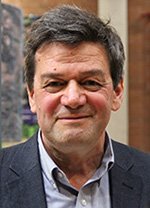
Lev Truskinovsky
ESPCI Paris, Paris Institute of Science and Technology
ABSTRACT: Considerable attention is now focused on the study of the mechanical behavior of muscle tissues viewed as prototypes of new materials that can actively generate stresses and adjust their rheology. The intriguing mechanical properties of such systems can be linked to hierarchical internal architecture reminiscent more of structures and mechanisms than of a homogeneous matter. To complicate matters further, in addition to external loading, muscle tissues are driven internally by endogenous mechanisms supplying energy and maintaining non-equilibrium.Truskinovsky reviews the main mechanisms of force generation in muscles and shows, in particular, that to generate substantial force, individual contractile elements must act collectively and that a factor responsible for the cooperativity is the dominance of parallel connections exemplified by elastic backbones. An important feature of such systems is the negative stiffness which brings muscle tissues into the class of meta-materials. In addition, muscles can actively tune their rigidity toward a critical state where correlation length diverges. The proximity to the critical point allows muscle tissue to amplify interactions and achieve considerable robustness in front of random perturbations. The mastery of muscle machinery is a crucial step in the bio-mimetic design of modular meta-structures endowed with active mechanical properties.
Self-consistent Clustering Analysis for Data-driven Design of Multiscale Material Systems
Friday, April 14, 2017, 10:10 a.m. through Friday, April 14, 2017, 11:15 a.m.
George J. Schroepfer Conference Theater, 210 Civil Engineering Building
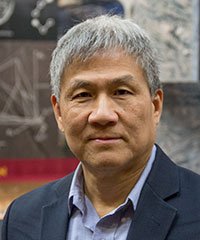
Wing-Kam Liu
Mechanical Engineering & Civil and Environmental Engineering, Northwestern University
ABSTRACT: The advent of advanced processing and manufacturing techniques provides unparalleled freedom to design new material classes with complex microstructures across scales from nanometers to meters. Liu presents a new data-driven computational framework for the analysis and design of these complex material systems. The proposed framework will be illustrated for advanced composites and the integrated design of various advanced material systems.
Resilience in Geomechanics: Assessment of Physico-chemical Degradation of Geomaterials
Friday, April 7, 2017, 10:10 a.m. through Friday, April 7, 2017, 11:15 a.m.
George J. Schroepfer Conference Theater, 210 Civil Engineering Building
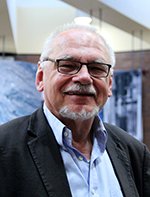
Tomasz Hueckel
Civil and Environmental Engineering, Mechanical Engineering and Materials Science, Duke University
ABSTRACT: It is widely accepted that critical properties of geomaterials play a key role in failure of earth-structures undergo often a substantial evolution induced by non-mechanical processes and variables. These include hydro-thermal fracture, thermal collapse, chemical mass removal or accretion (dissolution or precipitation), chemical shrinkage/swelling, drying shrinkage, capillary force evolution during pore water phase change. Resilience engineering strives to ensure that buildings, structures, and infrastructure are able to absorb damage induced by a combined long-term persistent (environmental) exposure and a short-term extreme adverse event, without suffering complete failure and with an intrinsic capability to restore (at least) the critical functions. Hueckel presents a review of several phenomena leading to geomaterial degradation, and a modeling methodology deal with multi-physical couplings in constitutive modeling. In plasticity, the central constitutive function is a hardening rule. Also in this case, phenomenological observations indicate a chemo-mechanical, two-way coupling. Other degradation phenomena discussed include drying – cracking and or the role of suction induced hardening in unsaturated materials.
The Global Challenge for Water Supply: Is Seawater Desalination a Sustainable Solution?
Friday, March 31, 2017, 10:10 a.m. through Friday, March 31, 2017, 11:15 a.m.
George J. Schroepfer Conference Theater, 210 Civil Engineering Building
AEESP Distinguished Lecture with Water Science and Technology Research Poster Session at 2:00
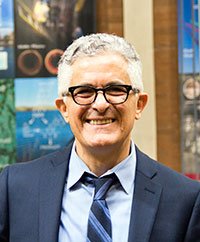
Menachem Elimelech
Chemical and Environmental Engineering, Yale University
ABSTRACT: Water scarcity is one of the greatest global crises that we currently face. In recent years, numerous large-scale seawater desalination plants have been built in water-scarce countries to augment available water resources, and construction of new desalination plants is expected to increase significantly in the near future. Despite the major advancements in reverse osmosis desalination technology, the production of freshwater by seawater desalination is still more energy-intensive than conventional technologies for the treatment of freshwater sources. Furthermore, there are concerns about the environmental impacts of desalination and uncertainty about the potential effects on the marine environment. Elimelech will review the energy efficiency, the state of the technology, and the environmental challenges of seawater desalination. He will discuss the possible reductions in energy demand by state-of-the art seawater desalination technologies; the potential role of advanced materials and innovative technologies in improving energy use, reliability, and environmental impact of seawater desalination; and the sustainability of desalination as a technological solution to global water shortages.
Numerical Modeling of Heterogeneous Materials in Technological Processes with Experimental Validation
Friday, March 24, 2017, 10:10 a.m. through Friday, March 24, 2017, 11:15 a.m.
George J. Schroepfer Conference Theater, 210 Civil Engineering Building

Benjamin Klusemann
Leuphana Universitat Luneburg
ABSTRACT: The relation between microstructure evolution and macroscopic constitutive response is crucial in the design and modeling of heterogeneous metallic materials. Klusemann addresses various experimental and numerical investigations of heterogeneous materials. This includes crystal plasticity modeling of heterogeneous thin sheet metal specimens, modeling of material instabilities as the Portevin-Le Chatelier effect, and phenomenological modeling of the anisotropic flow behavior of metal sheets. Laser welding techniques are one current focus of his research. The application of a thermo-mechanical material model for precipitation hardened aluminum alloys will be presented and compared to experimental observations in terms of residual stresses and hardness.
Incomplete Mixing in Reactive Systems - From Lab to Field Scale
Friday, March 10, 2017, 10:10 a.m. through Friday, March 10, 2017, 11:15 a.m.
George J. Schroepfer Conference Theater, 210 Civil Engineering Building
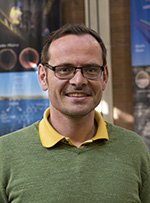
Diogo Bolster
Civil & Environmental Engineering & Earth Sciences, University of Notre Dame
ABSTRACT:In order for two items to react, they must physically come into contact. In the lab, reaction rates are often measured by forcing two species to continuously mix together. However, in real systems such forced mixing may not exist. A natural question arises: How do we take measurements from our well mixed laboratory experiments and use them to make meaningful predictions at scales of interest? In this talk, Bolster proposes a novel modeling framework that aims precisely to make predictions at scale. He will discuss a few examples: (i) mixing driven reactions in a quasi-well- mixed systems, (ii) mixing driven reactions in a porous column experiment, and (iii) mixing in a highly heterogeneous aquifer with a broad range of velocity and spatial scales.
Universal Fluctuations and Grain Effects in Thin Film Deposition
Friday, March 3, 2017, 10:10 a.m. through Friday, March 3, 2017, 11:15 a.m.
George J. Schroepfer Conference Theater, 210 Civil Engineering Building

Fabio D. A. Aarao Reis
Instituto de Fisica, Universidade Federal Fluminense, Brazil
ABSTRACT: In this talk, Aarao Reis presents a review of the concepts of kinetic roughening applied to thin film deposition, which helps to connect the microscopic dynamics with the morphological features, particularly the correlations of height fluctuations. He also discusses some of the work his research group is doing in this field. Aarao Reis shows how grainy surface features affect the surface roughness scaling obtained from microscopy images (mainly AFM), possibly leading to incorrect estimates of scaling exponents, thus justifying the development of different methods of analysis. He then discusses applications to Prussian blue and cooper oxide films deposited by electrochemical techniques. In both cases, scaling approaches or the analysis of distributions of roughness, local heights, and extremal heights indicate that roughening is dominated by diffusion of the adsorbed species. Finally, he analyzes images of polycrystalline cadmium telluride films grown by hot-wall epitaxy. Comparing distributions of local and global quantities shows unequivocal evidence of Kardar-Parisi-Zhang scaling.
Using Automated Data Sources to Improve the Performance of Public Transport Systems: A Framework and Applications
Friday, Feb. 24, 2017, 10:10 a.m. through Friday, Feb. 24, 2017, 11:15 a.m.
George J. Schroepfer Conference Theater, 210 Civil Engineering Building
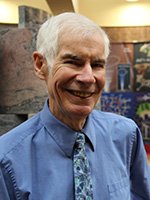
Nigel Wilson
Civil and Environmental Engineering, MIT
ABSTRACT: Automatic data sources--including automatic vehicle location systems, automatic passenger counting systems, and electronic fare payment and ticketing systems--are becoming ubiquitous in large, public transport systems. These sources are starting to impact the quality and availability of information for off-line (planning for service and operations, and performance monitoring and measurement) and real-time (operations management and control, and customer information) functions needed for service provision. Impacts of these advances are already apparent, yet there is potential for deeper impact. The power and cost-effectiveness of information technology continues to advance and will offer opportunities to develop and apply more ambitious models, which should positively affect the performance of public transport systems. Wilson presents a framework for assessing roles that automated data sources can play in public transport systems and summarizes recent applications of the based on research at MIT for Transport for London and other transit agencies. He also discusses the potential for further enhancements of critical public transport agency functions through making even greater use of these data sources in the future.